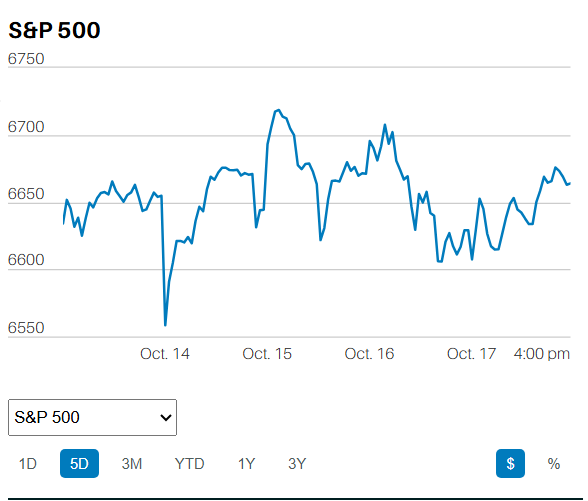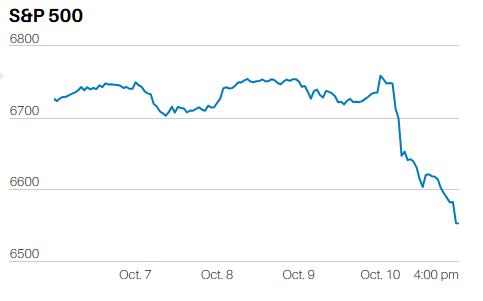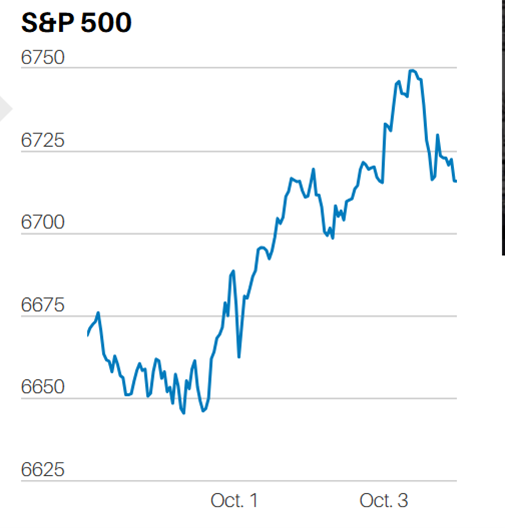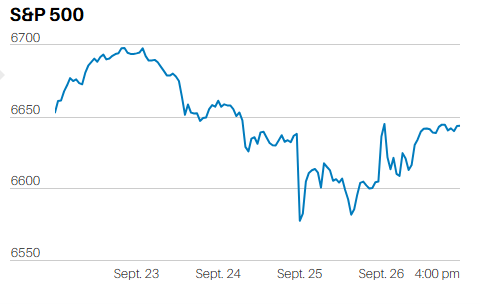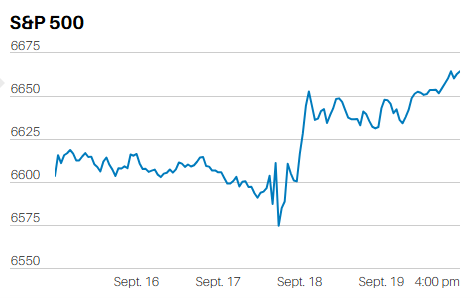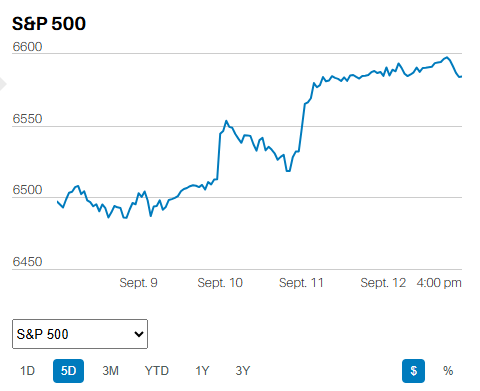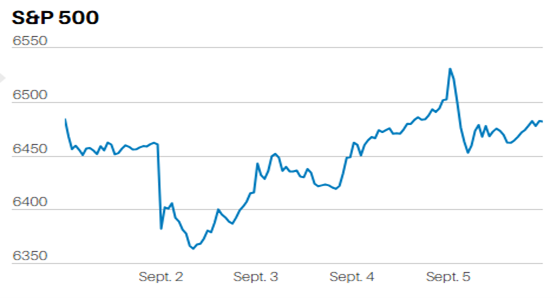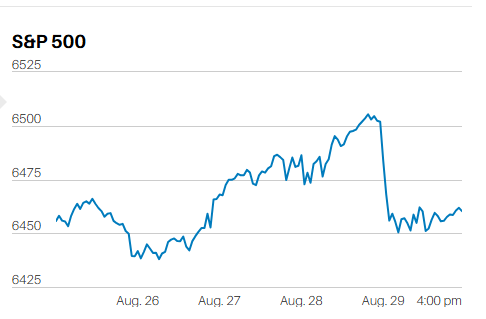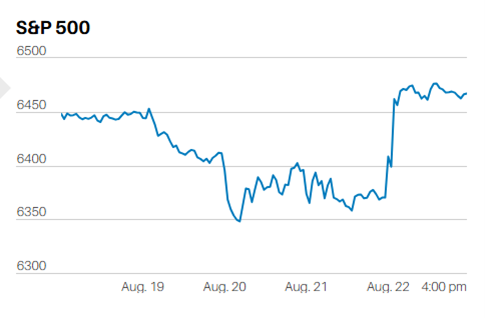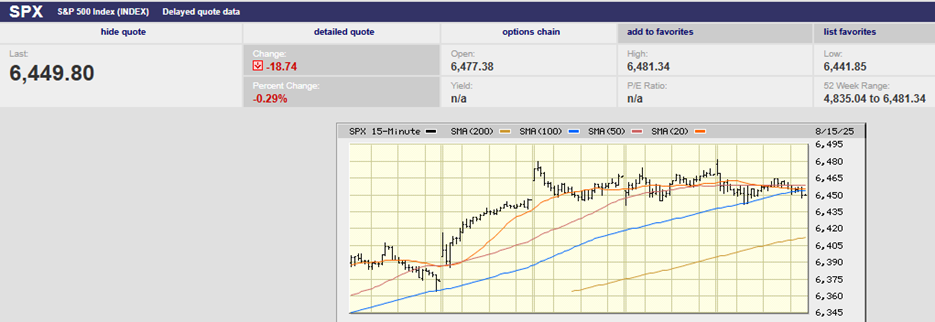Value stocks off to a great start

Market Update
The S&P 500 fell 0.3% last week to 4662.85. The Nasdaq lost 0.3% as well. We mentioned the 100-day moving average as support last week. The S&P did bounce just above the 100-day Monday morning after failing to hold the 50-day. The bounce lasted until Wednesday morning. The index fell Thursday and the first half of Friday. Buyers appeared around midday Friday, pushing the S&P back to flat on the day. The Friday afternoon recovery means we could see more upside this week. The 100-day moving average is at 4575. The 200-day is at 4425.
Earnings season is getting underway. J.P. Morgan reported Friday. Its stock fell 6.1%, despite beating earnings estimates. The drop in J.P. Morgan stock indicates that investors were expecting a bigger beat. Disappointment led to selling. A disappointing earnings season along with tightening monetary policy could cause more selling. A test of the 200-day moving average is possible in the coming weeks.
That the Fed will raise rates is not in doubt. December’s consumer price index rose 7% following a 6.8% increase in November. The federal-funds futures market is pricing in an 86% chance of a hike in March, according to the CME FedWatch. The futures market is indicating about a 60% chance of a fourth hike in December. Goldman Sachs expects four rate hikes this year. The Fed is also expected to end its bond-buying by March as a precursor to raising the fed funds rate. Finally, it is now widely accepted that the Fed will allow its balance sheet to start shrinking this year as well.
That last is important. The bond market will have to absorb an additional $350 billion in bonds in 2022 if the Fed starts shrinking its balance sheet, according to J.P. Morgan. The law of supply and demand will kick in as the Fed backs away from bond-buying. Bond prices will drop, and yields will rise as a result. The Fed pays cash for the bonds it buys. Less bond buying means less cash injected into the financial system. Less cash in the financial system means less cash with which to buy stocks.
Rising interest rates doesn’t necessarily mean high-interest rates. Futures and forward contracts are anticipating the Fed funds rate topping out in the 1.6% range sometime in 2024, according to Barron’s. The Fed funds rate peaked at 2.4% in 2019 during the last rate hike cycle. The Fed believes the longer-run neutral rate is 2.5%, according to the December policy meeting minutes. The neutral rate is the rate that is neither accommodative nor restrictive. Perhaps the bond crowd correctly recognizes that the heavily indebted economy can’t handle a Fed funds rate above 1.6%. The Fed won’t be able to raise the Fed funds rate back to the neutral rate without tanking the economy if bond investors are correct. Furthermore, real interest rates will remain negative since rates will remain below the inflation rate. A negative real rate is bullish for commodities and a positive for stocks as well. It is not helpful for inflation, however.
Economic Indicators
The consumer price index rose 0.5% month-to-month in December. The core CPI was up 0.6%. Year-over-year CPI was 7.0% and core CPI was 5.5%. The inflation numbers require an aggressive policy response from the Federal Reserve. It is currently behind the curve, having continued QE for too long. The FOMC may have to accelerate its tightening schedule. Stocks and bonds will not react well if it does.
Retail sales fell 1.9% in December after rising 0.2% in November. Retail sales excluding autos fell 2.3%. Consumer spending is 70% of the economy. Continued weakness in spending will negatively impact corporate earnings. Sentiment indicators remain weak, pointing to continued weak consumer spending.
The Barron’s Roundtable:
Barron’s conducts in-depth interviews with 10 well-known institutional investors every year. The experts are expecting a tough year for stocks. Barron’s summarizes the experts thusly: “The group looks for inflation to rage and stocks to stumble in the first half of 2022, as the Fed begins to raise interest rates, although the year’s second half could bring more stability and positive returns. Their forecasts for the S&P 500 index range from a double-digit loss for the year to a gain of 8% or so, plus dividends, with most panelists in the middle.”
Importantly, none of the experts recommend cash. None of them were constructive on bonds either. Scott Black was quoted as saying, “I would avoid fixed income like the plague.” Black is the founder of Delphi Management and a well-known small-cap investor. Sonal Desai is Chief Investment Officer at Franklin Templeton. She was quoted as saying, “I’m the token fixed-income person on the panel, and I would argue that fixed income is one of the least attractive areas to invest in this year.” Norwood Economics remains underweight bonds.
The experts were cautious on stocks as well. The problem with stocks is price. The stock market is expensive. They pointed out though that many stocks are not. The S&P 500 is trading at 21 times 12-month forward earnings. The long-run average is 15 to 16. The five largest stocks in the S&P 500 account for 22.4% of the index. The top 10 account for 28.8% of the index. The top five stocks in the Nasdaq account for 40.2% of the index. Eight of the 25 biggest S&P 500 stocks have a multiple of at least 30 times 2022 estimated earnings, according to Barron’s. Apple was a $40 stock in 2019 and now trades for $173. The company isn’t 330% more valuable now than in the middle of 2019.
Small-cap stocks appear less expensive but are not. The Russell 2000 trades for 17 times forward earnings. Black of Delphi Management points out that 39% of the companies in the index have no earnings. The Russell’s true P/E is about 28 times, after adjusting for the companies without earnings, according to Black. The 28 multiple is about the same as the Nasdaq.
Norwood Economics owns 25 stocks for its clients. Most of those 25 stocks trade for less than 15 times earnings and many trade for less than 10 times earnings. All but two pay an above-market dividend rate. In fact, many of our stocks have a dividend yield above 3%, some have a yield above 6%. Investors have been rotating out of high-priced growth stocks and into value stocks in 2022. Our stock portfolio is up over 10% year-to-date while the S&P 500 has lost a bit more than 2% YTD. Importantly, we don’t own any of the hyper-expensive mega-caps that dominate the S&P 500 and Nasdaq.
Performance is a difficult conversation to have with clients. Understanding risk-adjusted performance isn't easy. We're handily beating the S&P 500 YTD, but it might not last. Our portfolio tracking error is large. That's a fancy way of saying our stock portfolio bears little resemblance to the S&P 500. Large tracking error eventually leads to underperformance at times as well. Our turn will come. The hope is that over a complete market cycle we add value with our stock picking. Of course, we have an advantage in that value beats growth over the long run by 4.33% on average. I expect value to beat growth over the next 10-years as it has done in most 10-year periods since the 1920s. Value is currently quite cheap compared to growth on a historical basis.
Regards,
Christopher R Norwood, CFA
Chief Market Strategist
